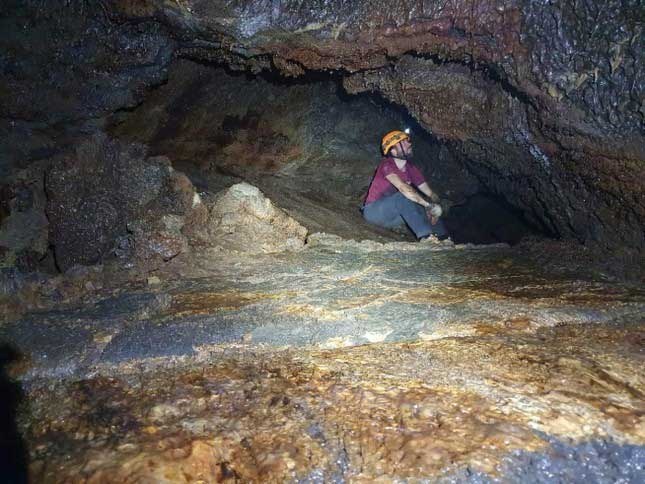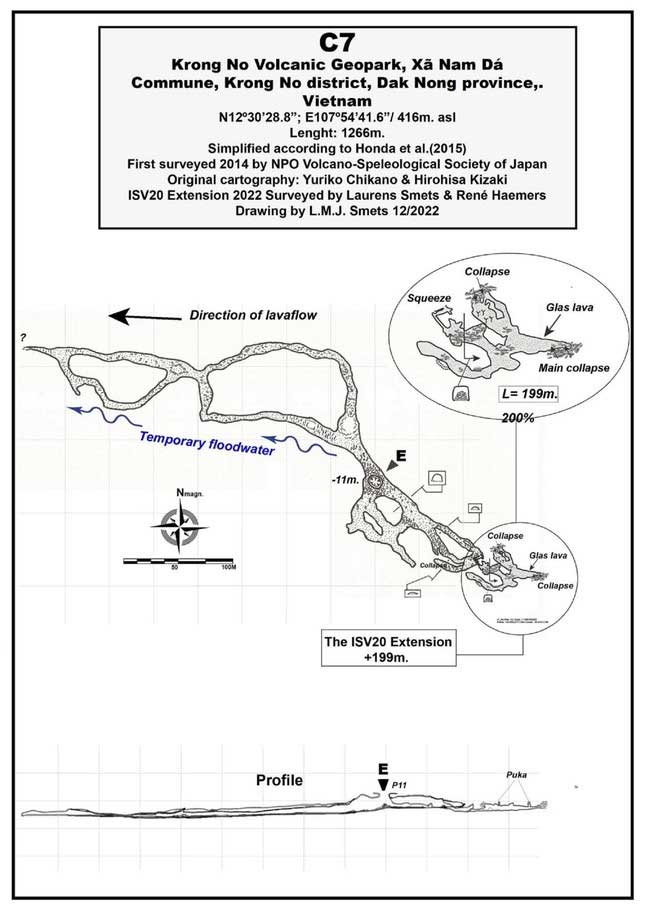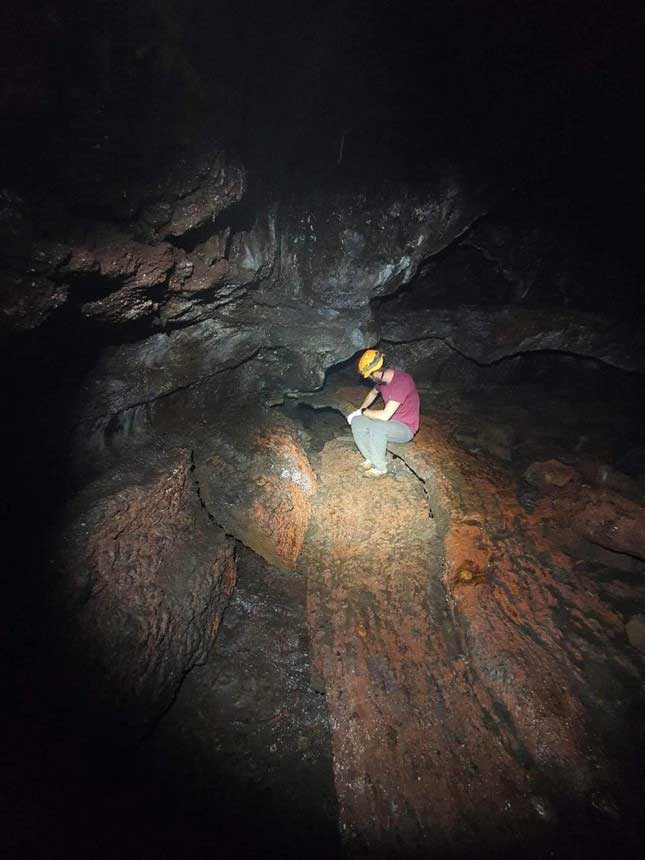Mr. Laurens Smets, a Dutch expert researching volcanic caves, recently released a report announcing the results of measurements and additional mapping of Cave C7, which is part of the longest volcanic cave system in Southeast Asia. According to the report, the cave’s length has set a new record.
On December 13, the management board of the UNESCO Global Geopark Dak Nong announced that during a survey following the 20th International Conference on Volcanic Caves held in the province, researchers discovered a new branch of Cave C7 with an officially confirmed length of 199m, bringing the total length to over 1,266m.

Survey experts in Cave C7.
Researchers are currently working on completing 3D graphic visualization of the Cave C7 system. This cave has been recognized by the international scientific community as the longest volcanic cave in Southeast Asia.

Diagram of Cave C7 with the newly discovered branch – (Graphic: Laurens Smets; Source: UNESCO Global Geopark Dak Nong).
Previously, information from the management board of the UNESCO Global Geopark Dak Nong indicated that during the survey of Cave C7, experts had discovered several additional branches with a length of approximately 175m.
As previously reported, the Krong No volcanic cave system is a volcanic cave system within basalt rock that spans about 10km; it has set records for its scale, length, and uniqueness in Southeast Asia, discovered by scientists in 2014.

The beauty of the Krong No volcanic cave.
The Krong No volcanic cave system remains relatively intact. During research and surveys, scientists have found traces of prehistoric tribal habitation dating back approximately 6,000 to 7,000 years. In September 2018, researchers announced the discovery of prehistoric remains. Previously, the only other volcanic cave system in the world with evidence of human habitation was found in South Korea.


















































